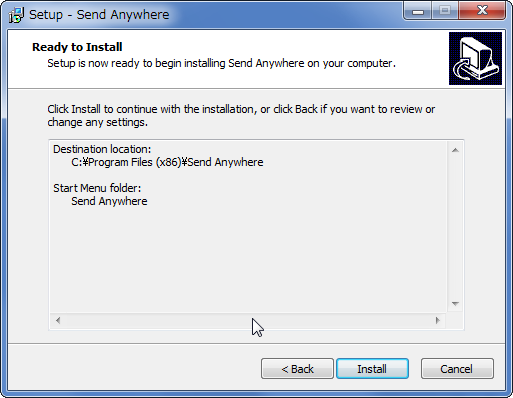

- #SEND ANYWHERE ASKING FOR INPUT KEY HOW TO#
- #SEND ANYWHERE ASKING FOR INPUT KEY VERIFICATION#
- #SEND ANYWHERE ASKING FOR INPUT KEY CODE#
- #SEND ANYWHERE ASKING FOR INPUT KEY FREE#
When a project goes through verification, the current status displays under Verification status: Note: The consent screen settings within the console are set at the project level, so the information that you specify on the Consent screen page applies across the entire project. Add scopes justification, a contact email address, and any other information that can help the team with verification, then click Submit.A Verification required window displays.When you're finished adding details to the OAuth consent screen, click Submit for verification.You must select all scopes used by the project.

To select scopes for registration, you need to enable the API, like Drive or Gmail, from APIs & Services > API Library.Sensitive scopes display a lock icon next to the API name. On the dialog that appears, select the scopes your project uses.Add required information like a product name and support email address.Go to the Google API Console OAuth consent screen page.To set up your project's consent screen and request verification:
/i.s3.glbimg.com/v1/AUTH_08fbf48bc0524877943fe86e43087e7a/internal_photos/bs/2017/1/R/lRjm9qS7GYHNec1rmeoA/passo-1.png)
To remove the unverified app screen, you can request OAuth developer verification by our team when you complete the Google API Console OAuth consent screen page. If your application uses sensitive scopes without verification, the unverified app screen displays before the consent screen for users who are outside of your G Suite organization. For more information about the verification process, see the OAuth Application Verification FAQ. Learn more about public versus internal applications below. Google verifies public applications that use OAuth 2.0 and meet one or more of the verification criteria. When you use OAuth 2.0 for authentication, your users are authenticated after they agree to terms that are presented to them on a user consent screen. To delete a client ID, go to the Credentials page, check the box next to the ID, and then click Delete.
#SEND ANYWHERE ASKING FOR INPUT KEY HOW TO#
(The following procedure explains how to set up the Consent screen.) You won't be prompted to configure the consent screen after you do it the first time. If this is your first time creating a client ID, you can also configure your consent screen by clicking Consent Screen.Application types are described in more detail in the following sections. Select the appropriate application type for your project and enter any additional information required.Note: If you're unsure whether OAuth 2.0 is appropriate for your project, select Help me choose and follow the instructions to pick the right credentials. Click New Credentials, then select OAuth client ID.If the APIs & services page isn't already open, open the console left side menu and select APIs & services.From the projects list, select a project or create a new one.Go to the Google Cloud Platform Console.To create an OAuth 2.0 client ID in the console: It’s also available as a Chrome extension and WordPress plugin.To use OAuth 2.0 in your application, you need an OAuth 2.0 client ID, which your application uses when requesting an OAuth 2.0 access token. Additionally, SendAnywhere is also available as a native app for all the major OSes on both mobile (iOS, Android, and Windows) and desktop (Mac, Windows, and Linux). The service is available as web apps, accessible from any device using any browser.
#SEND ANYWHERE ASKING FOR INPUT KEY CODE#
By logging in you save yourself the hassle of inputting the six-digit code every time you receive a file from the other devices. But you can opt to log in if you want to. The file is protected by a unique six-digit code to prevent unauthorized people from intercepting them. The only requirement is they are connected to the Internet. That being said, the web version of the service stated that the maximum file size is 1GB via the web interface and 20GB via the desktop app.įor example, you could quickly send the music loop created in your phone to the laptop that you’re working on, or you can share the group selfies to all group members, whether they are nearby or not. And – according to the FAQ – with no limit to the file size.
#SEND ANYWHERE ASKING FOR INPUT KEY FREE#
SendAnywhere is a free service that will help users send their files anywhere from and to all platforms with no login required. One of the available file exchange solutions that can cater to multi-platform users is SendAnywhere. There are many attempts to solve this problem such as the Apple-environment-only solution of DeskConnect, cloud-based sending system Droplr, or even cloud storage like Dropbox. Email is one of the oldest and most popular ways to exchange files but not necessarily the most practical.


 0 kommentar(er)
0 kommentar(er)
